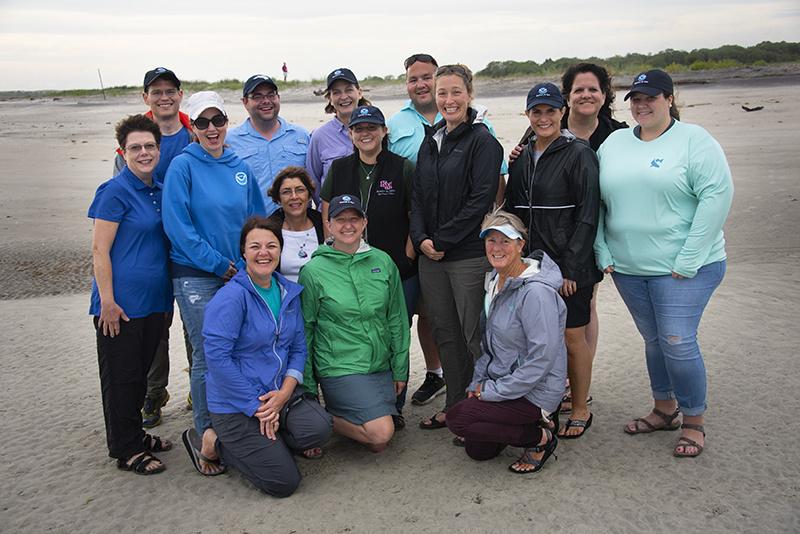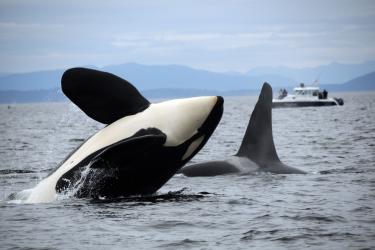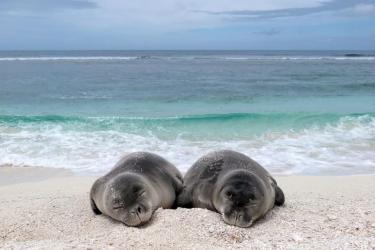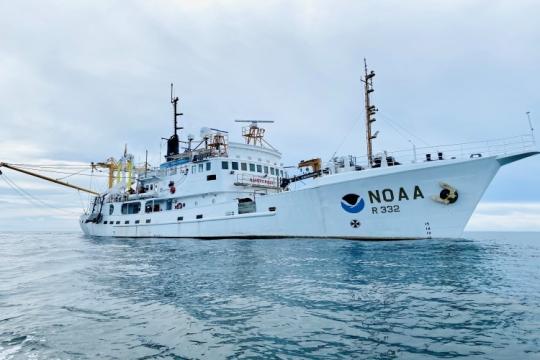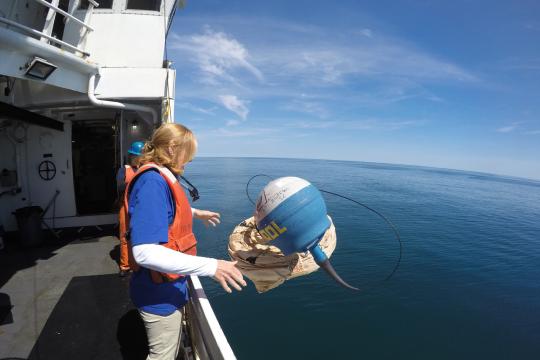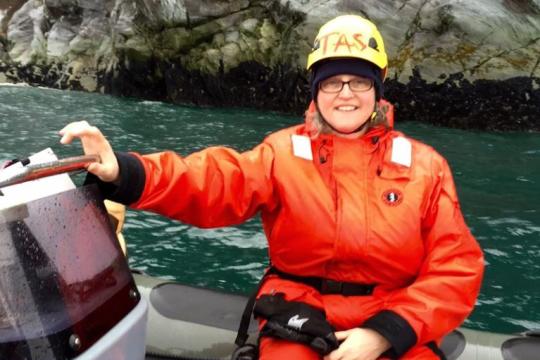Since 1990, more than 850 teachers have sailed aboard NOAA research ships. They serve as valued crew members, conducting hands-on research and learning more about the science that informs our conservation and management efforts.
This unique professional enhancement opportunity is made possible by the NOAA Teacher at Sea program. For three decades, the Teacher at Sea program has helped teachers participate in annual NOAA research surveys conducted by our scientists. Teachers from around the country embark on a two to three week expedition at sea. They gain invaluable on-the-job experience and communicate their journey through a series of blogs and lesson plans.
After their research cruise, teachers take their newfound knowledge back to their classrooms and hometowns. Teacher at Sea alumni have worked with more than 500,000 students and 3 million other people at conferences and other outreach events. The Teacher at Sea Alumni Association was created in 2011 to provide a way for teachers to continue learning and network with others who’ve had the same experience.
Teacher at Sea Program Manager Jennifer Hammond said, “Teachers at Sea are great ambassadors for NOAA science. We accept Pre-K through college-level teachers in all subject areas who demonstrate they can communicate the science back to their classrooms, whether they’ve taught for one year or 20 years. The original goal of the program was for teachers to get an opportunity to see how we conduct at-sea research and introduce them to NOAA careers, specifically NOAA Corps and at-sea science.”
History of the Program
Mosher said the experience allowed her to see “…the reality of scientific research—the expertise, the planning, the time, the effort, the dangers, the data, the equipment, the cataloging and computing of numbers, the frustrations. But most importantly, I saw the information and careful analysis would help us understand the natural world.”
Experiencing Real-World Science at Sea
By doing the science, the teachers gain a greater connection to the science. They see firsthand how our surveys translate to the real-world and they learn how to communicate the experience to their students. They also become an integral part of the research team. “The teachers learn that problem-solving and team-building are a much bigger component of science than they thought. You have to rely on each other and the equipment you have at-hand,” Hammond said.
Some of these teachers have never had a real-world research experience before. Their first trip out to sea can be intimidating regardless of background and skill level. The Teacher at Sea program puts teachers squarely in the shoes of their students, who encounter new and complex lessons every day at school. For many teachers, their experience at sea reminded them what it felt like to be a student. It allowed them to change their teaching habits to more effectively reach students who feel overwhelmed by new class material.
Program Benefits Teachers—and Scientists
It’s not just the teachers and students that benefit from the program. NOAA scientists are eager to work with Teachers at Sea. “Teachers are suited for sea,” Hammond said. “They stand up all day long, they get no lunch break, rare bathroom breaks, they’re constantly adapting to their class and lesson plans. They’re prepared for rapid change, they work long days, and they tend to be a group that doesn’t sleep much. Scientists find them hard working, energetic, motivated, and appreciative of the experience. They’re such a wonderful contribution to the research team. This is why more than 70 NOAA scientists request Teachers at Sea to join their surveys each year.”
Although we could not send teachers to sea this year, the program continues to support the educational community through the Teacher at Sea Alumni Association.
Learn how we’re supporting teachers and students during these challenging times
